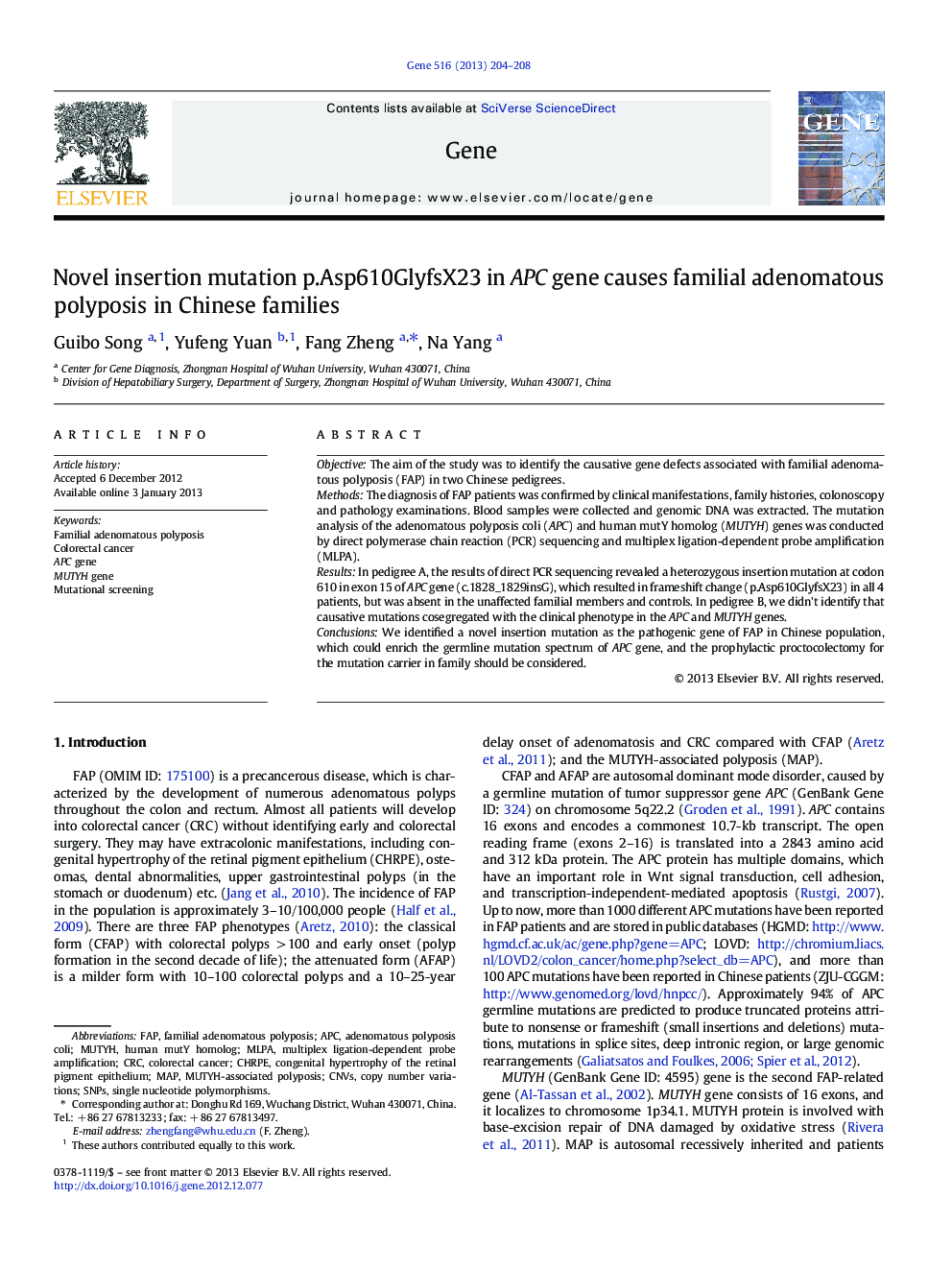| Article ID | Journal | Published Year | Pages | File Type |
|---|---|---|---|---|
| 2817404 | Gene | 2013 | 5 Pages |
ObjectiveThe aim of the study was to identify the causative gene defects associated with familial adenomatous polyposis (FAP) in two Chinese pedigrees.MethodsThe diagnosis of FAP patients was confirmed by clinical manifestations, family histories, colonoscopy and pathology examinations. Blood samples were collected and genomic DNA was extracted. The mutation analysis of the adenomatous polyposis coli (APC) and human mutY homolog (MUTYH) genes was conducted by direct polymerase chain reaction (PCR) sequencing and multiplex ligation-dependent probe amplification (MLPA).ResultsIn pedigree A, the results of direct PCR sequencing revealed a heterozygous insertion mutation at codon 610 in exon 15 of APC gene (c.1828_1829insG), which resulted in frameshift change (p.Asp610GlyfsX23) in all 4 patients, but was absent in the unaffected familial members and controls. In pedigree B, we didn't identify that causative mutations cosegregated with the clinical phenotype in the APC and MUTYH genes.ConclusionsWe identified a novel insertion mutation as the pathogenic gene of FAP in Chinese population, which could enrich the germline mutation spectrum of APC gene, and the prophylactic proctocolectomy for the mutation carrier in family should be considered.
► FAP is a precancerous disease and accounts for nearly 1% of CRC cases. ► We evaluated the APC and MUTYH genes by using direct PCR sequencing and MLPA methods in two Chinese FAP pedigrees. ► We identified a novel heterozygous insertion mutation (c.1828_1829insG, p.Asp610GlyfsX23) in APC gene. ► The insertion mutation was predicted to produce a truncated protein, which may not bind and degrade β-catenin.
